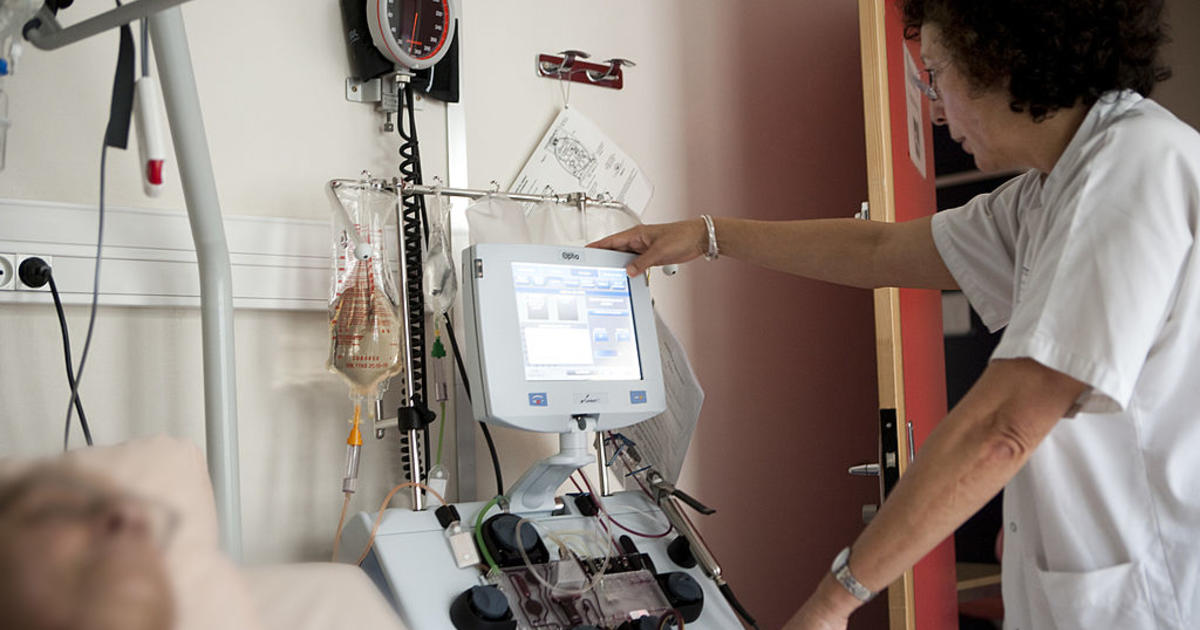Overactive Bladder Treatment: Nerve Stimulation
PITTSBURGH (KDKA) -- Florence Mediate loves to travel, but she hasn't taken a trip since 2012.
"The car bothered me. The airplane bothered me. Any vibration of any kind became a symptom," she describes.
She had the chance to go to Egypt, China and India, but she didn't want to have to ask for a bathroom.
"Women suffer from this, in very quiet, they don't talk about it, they don't tell their friends, they don't tell their husband or their doctor," she admits.
She has overactive bladder. Why this condition happens isn't known, though people with neurological conditions, such as multiple sclerosis or spinal stenosis can be predisposed. The main symptoms are urinary urgency, frequency and accidents.
"The worst of the symptoms for me was the pressure and the pain," she says, "Going to the bathroom every 15-20 minutes. Wetting your pants, not quite making it."
Florence didn't want surgery for an implanted stimulator. She didn't want botox with the potential risk of paralyzing her bladder. Giving up foods that trigger the bladder, like fruit and coffee, didn't help. And medicines only dried out her mouth and eyes.
"I tried two medications, which only gave me the side effects," she says.
"By the time they get to our department, they're really desperate, because all their other doctors have tried different things and so it's nice to be able to give them another opportunity," says Beth Padin, a physician assistant at UPMC Magee Urology.
She was offered posterior tibial nerve stimulation.
"There is a small electrode that goes into the tibial nerve, which is right behind the ankle bone," explains Padin.
The posterior tibial nerve goes up the leg to the spine and into the pelvis. The nerves are involved in bladder sensation and muscle contraction, relaxation, and the reflexes involved in urination.
"So we want the patient to feel a stimulation on the bottom of her foot. Feels like pins and needles, or kind of like waves running through. And once they get to a level where they can feel it. Then they sit for 30 minutes," Padin continues.
This is FDA approved, though insurance coverage varies. Treatments are once a week for 12 weeks, then once a month. As symptoms improve, sessions can be spaced to every six weeks, then eight weeks. But there is no long-term information on this technique to guide a stopping point.
"I want to get to once a year," says Florence.
"Usually they get about 60 percent improvement of their leaks," says Padin.
After three weeks, she started noticing changes -- first in being able to make it to the bathroom, then in the pressure, then in the pain.
"I went from going to the bathroom every 15 to 20 minutes, to going to the bathroom once in an hour," says Forence. "This has been so successful to me, I want every woman to know there is hope."
Hope for getting back to the things she loves and not worrying about finding a bathroom.
"Or not even know how to say bathroom in another language," Florence adds. "This year we are planning on going to Columbia, Brazil and probably Europe, because now I'm a new woman."
You May Also Be Interested In These Latest News Stories
Join The Conversation On The KDKA Facebook Page
Stay Up To Date, Follow KDKA On Twitter



